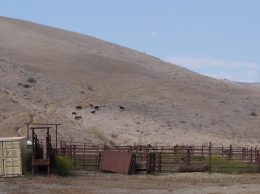By Darlene Bierig
I’d like to set the record straight on comments I made at a recent meeting in explanation of why surcharges were necessary for the Montecito Water District. [See “Montecito has no cheap fix for drought,” in the March 27-April 2 edition.]
The information I presented at the meeting showed that we now have an acceptable water supply (assuming continued conservation) through the end of the 2015-16 water year, which is until the end of September 2016. However, if current climatic conditions continue, our water supply during the following water year (October 2016-September 2017) “falls off the cliff.”
The point I was making is that it is imperative to bring in additional sources of water — through seawater desalination, additional supplementary purchases, or some other source — to Montecito for the 2016-2017 water year. Obviously, we are working against the clock in this regard and a suspension of our activities would have dire consequences.
By way of background, 95 percent of our existing water supply is derived from surface supplies as opposed to groundwater, sea water desalination or recycled wastewater. Unfortunately, surface water supplies (i.e. rivers, creeks, the state water project) are the first to dry up during a drought. A water supply portfolio reliant on surface supplies puts our community in a very vulnerable position.
Therefore, our goal is to diversify our supply portfolio so it includes a broader array of water sources; doing so will increase our water supply’s reliability during a drought, and therefore our community’s water security.
The new supply sources that we are focused on delivering include sea water desalination and the direct potable reuse of waste water. Both involve large capital construction projects that take years to plan, permit and build. In the meantime, we have purchased a large amount of supplemental water to hold us over until new sources are available.
In other words, supplemental water purchases are short-term solutions that serve to bridge our supply requirements until the long-term supplies are developed.
Montecito Water District is currently $5 million in the red compared to our five-year financial plan. This is due to the extraordinary imbalance in revenues and expenses caused by the drought. Water sales revenues have plummeted because we have less water to sell than in normal periods, while we have more than $3 million in extraordinary expenses such as supplemental water purchases and construction of emergency pump platforms in Cachuma, incurred responding to the water shortage crisis.
Simply stated, we are nearly $2 million down in revenue and $3 million up in expenses compared to our five-year financial plan. A continuation of this trend is not sustainable.
The point I was making during the public hearing was that if the temporary surcharge had not been adopted, we would not be able to pay for any additional supplemental water purchases, or pay for any further work on our long-term supply projects. Basically, all water supply enhancements would have to come to a grinding halt. This is simply not a viable option given our water supply outlook for the 2016-2017 water year.
Fortunately, the surcharge was adopted, so we are on the path to becoming financially healthy again. It will allow us to secure our supplies in the short term and remain focused on projects necessary to achieve a secure water future for our community.
• Darlene Bierig is board president of the Montecito Water District.






 Print
Print Email
Email

















